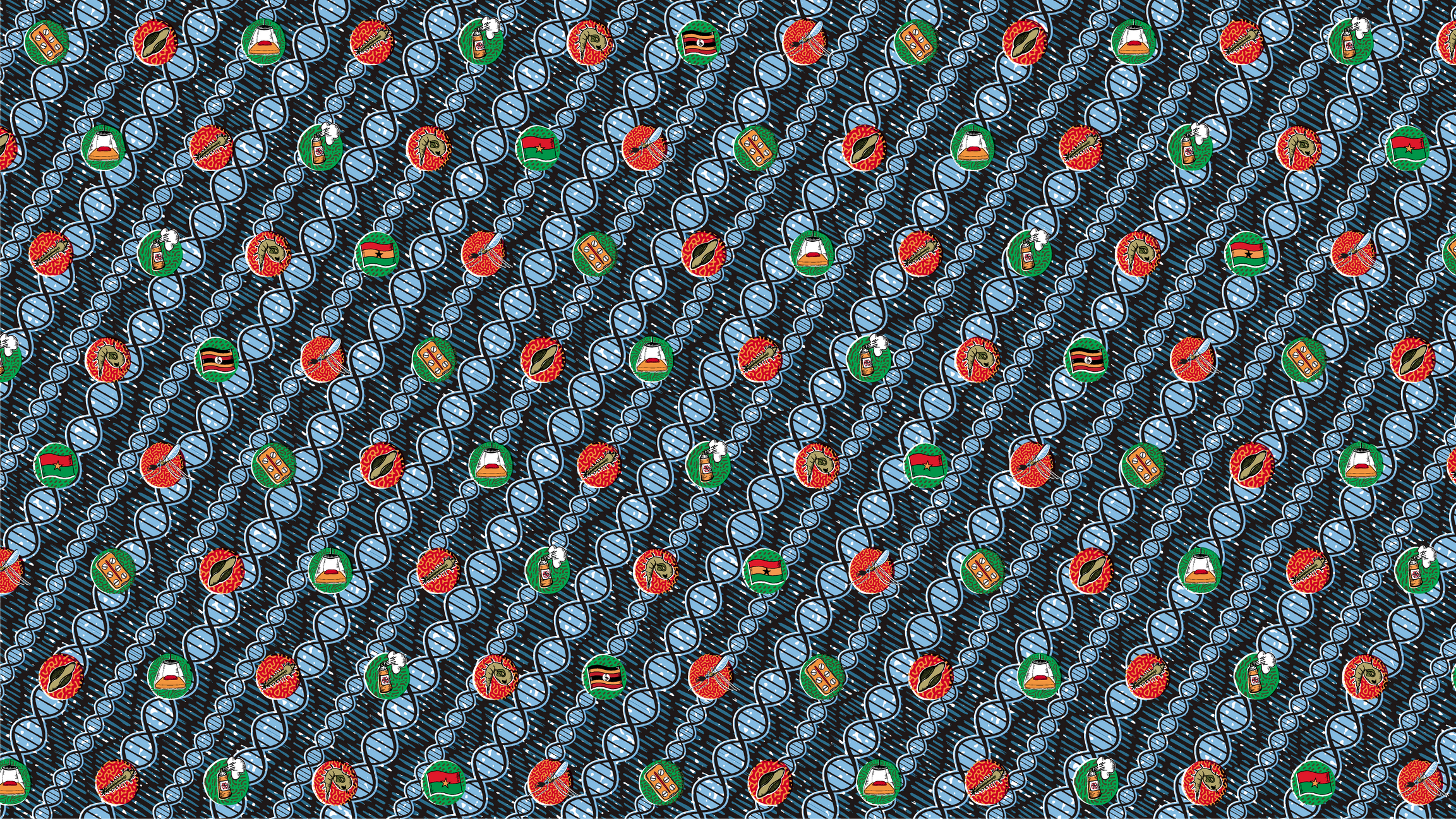

Target Malaria Toolkit
Target Malaria is pleased to share its social media toolkit for World Mosquito Day (August 20, 2024) to provide partners and advocates with messaging, media assets, and resources.
The main goal of Target Malaria’s World Mosquito Day campaign, this year, is to clarify the distinctions between various mosquito species and the diseases they transmit. In a context of high misinformation and in light of the 2023 dengue outbreak, we believe it is important to clarify the differences between malaria and dengue and the vectors that transmit these diseases: Anopheles and Aedes mosquitoes.

Messaging
General messages
- Malaria and dengue are two very common mosquito-borne diseases in certain parts of the world.
- Dengue and malaria are two very different diseases caused by different pathogens and different mosquito species (Aedes mosquitoes for dengue and Anopheles mosquitoes for malaria).
- Both malaria and dengue are transmitted by female mosquitoes and cause severe fevers in humans. Because of this similarity, they can be confused by patients and medical personnel.
- Malaria and dengue can be present in the same countries, which can be problematic if there is an outbreak of both diseases at the same time.
- Misdiagnosis between malaria and dengue is common and contributes to the prevalence of co-infection.
Messages on vector-borne diseases
- “Vector-borne diseases” are human illnesses caused by pathogens that are transmitted by vectors.
- Vectors are living organisms that can transmit infectious pathogens between humans, or from animals to humans.
- Every year, there are more than 700,000 deaths from vector-borne diseases in the world.


















Messages on mosquito-borne diseases
- Mosquitoes are vectors for a number of pathogens (viruses and parasites) that transmit various diseases that can be refered to as “mosquito-borne diseases”. Some include (non-exhaustive list):

Messages on dengue
- Dengue is a mosquito-borne disease and is caused by a flavivirus.
- The dengue virus is transmitted to humans through the bites of infected female Aedes mosquitoes.
- The global incidence of dengue has grown dramatically in recent decades. Cases reported to WHO increased from 505,430 cases in 2000 to 6.5 million in 2023.
- About half of the world's population is now at risk.
- Dengue is now endemic in more than 100 countries in the WHO Regions of Africa, the Americas, the Eastern Mediterranean, South-East Asia and the Western Pacific.
- There is no specific treatment for dengue, but appropriate medical care frequently saves the lives of patients with dengue hemorrhagic fever. Early detection and access to proper medical care lowers fatality rates below 1%.
- At present, the only method of controlling or preventing dengue virus transmission is to combat the vector mosquitoes using environmental management and chemical methods; such as insecticides.
- At present, one vaccine (QDenga) has been approved and licensed in some countries. However, it is recommended only for children aged 6 to 16 in high-transmission settings. Several additional vaccines are under evaluation.


















Messages on malaria
- Malaria is a mosquito-borne disease and is caused by the Plasmodium parasite.
- Malaria spreads to people through the bites of infected female Anopheles mosquitoes.
- Symptoms usually start within 10–15 days of getting bitten by an infected mosquito. Symptoms can be mild or life-threatening. Mild symptoms are fever, chills and headache. Severe symptoms include fatigue, confusion, seizures, and difficulty breathing. The first symptoms may be mild, similar to many febrile illnesses, and difficulty to recognize as malaria. Left untreated, P. falciparum malaria can progress to severe illness and death within 24 hours.
- There are 5 Plasmodium parasite species that cause malaria in humans and 2 of these species – P. falciparum and P. vivax – pose the greatest threat. P. falciparum is the deadliest malaria parasite and the most prevalent on the African continent.
- Every year, malaria kills over 608 000 people and infects over 249 million people; a third of the world is at risk of contracting this disease transmitted by mosquitoes.
- Although malaria is present is many countries, Africa continues to carry a disproportionately high share of the global malaria burden.
- In 2022, Africa was home to about 94% of all malaria cases and 95% of deaths. Children under 5 years of age accounted for about 78% of all malaria deaths in Africa.
- In 2022, four African countries accounted for just over half of all malaria deaths worldwide: Nigeria (26.8%), the Democratic Republic of the Congo (12.3%), Uganda (5.1%) and Mozambique (4.2%).
- Early diagnosis and treatment of malaria reduces disease, prevents deaths and contributes to reducing transmission.
- WHO recommends that all suspected cases of malaria be confirmed using parasite-based diagnostic testing (through either microscopy or a rapid diagnostic test).
- Malaria is a serious infection and always requires treatment with medicine.
- Vector control is a vital component of malaria control and elimination strategies as it is highly effective in preventing infection and reducing disease transmission.
- The 2 core interventions are insecticide-treated nets (ITNs) and indoor residual spraying (IRS).
- Since October 2021, WHO has recommended broad use of the RTS,S/AS01 malaria vaccine among children living in regions with moderate to high P. falciparum malaria transmission. The vaccine has been shown to significantly reduce malaria,
and deadly severe malaria, among young children.
- In October 2023, WHO recommended a second safe and effective malaria vaccine, R21/Matrix-M. The availability of two malaria vaccines is expected to make broad-scale deployment across Africa possible.


















Comparison

Flavivirus
Aedes mosquitoes
No specific treatment
Anopheles mosquitoes
Anti-malaria drugs for prevention and
Messages on current situation
- The global incidence of dengue has markedly increased over the past two decades, posing a substantial public health challenge.
- From 2000 to 2019, the World Health Organization (WHO) documented a ten-fold surge in reported cases worldwide increasing from 500,000 to 5.2 million.
- Urbanisation, international travel, climate change, and socioeconomic factors have fueled these recent dengue upsurges.
- Dengue outbreaks are happening at the country level and regional level within countries.
- After a slight decline of cases between the year 2020-2022 due to the COVID-19 pandemic and lower reporting rate, in 2023, an upsurge in dengue cases has been observed globally, characterised by a significant increase in the number, scale, and simultaneous occurrence of multiple outbreaks, spreading into regions previously unaffected by dengue.
- The number of cases in 2024 is expected to be the highest and over 9 million cases have been reported till June 2024.
- Malaria cases and death have not seen an upsurge of this magnitude although the prevalence is higher now than it was pre-COVID.
- While malaria and dengue present similarities, in particular in the symptoms and the fact that they are transmitted both my mosquitoes, it is fundamental to consider these two diseases very differently.
- The mosquitoes that transmit those two diseases belong to distinct species that do not mate and the pathogens that they transmit are also very different: a virus, in case of dengue and a parasite, in case of malaria. Aedes mosquitoes occur in more urban areas, whilst Anopheles mosquitoes stay in more rural areas.


















Hashtags and accounts
Hashtags
#WorldMosquitoDay
#MosquitoCountdown
#EndMalaria
#Malaria
#Dengue
#ZeroMalaria
#ZeroMalariaStartsWithMe
Accounts
@_AfricanUnion
@ALMA_2030
@APLMA_Malaria
@BeatMalaria
@EndMalaria
@FightingMalaria
@GatesFoundation
@GeneDriveNet
@GHS
@GLIDE_AE
@GlobalFund
@GlobalFundAdvocates
@GoodbyeMalariaZ
@ImpSanteAfrique
@MalariaNoMore
@MalariaNoMoreUK
@MCDGlobalHealth
@MedsforMalaria
@PATHtweets
@PMIgov
@SpeakUpAfrica1
@SwissMalaria
@TargetMalaria
@TeamZeroPalu
@Unicef
@WHO
@ZeroMalaria


















Suggested social media posts
Mosquitoes: Anopheles and Aedes
#DidYouKnow there’s over 3,500 different species of mosquito worldwide🌍
#EndMalaria #WorldMosquitoDay #Malaria #MosquitoCountdown
#DidYouKnow there are around 150 million years of evolution separating Aedes and Anopheles mosquitoes.
Anopheles and Aedes mosquito cannot mate to each other.
#EndMalaria #WorldMosquitoDay #Malaria #Dengue #MosquitoCountdown
Aedes mosquitoes cannot transmit malaria and Anopheles mosquitoes cannot transmit dengue🦟
#EndMalaria #WorldMosquitoDay #Malaria #MosquitoCountdown
Malaria and Dengue
Dengue and malaria are two very different diseases caused by different pathogens and different mosquito species. Aedes mosquitoes transmit dengue and Anopheles mosquitoes transmit malaria 🌍
#EndMalaria #WorldMosquitoDay #Malaria #MosquitoCountdown
Both #Malaria and #Dengue are transmitted by female mosquitoes and cause severe fevers in humans. Because of this similarity, they can be confused by patients and medical personnel.
#MosquitoCountdown #WorldMosquitoDay #EndMalaria
#Dengue is a mosquito-borne disease, caused by a flavivirus.
The dengue virus is transmitted to humans through the bites of infected female Aedes mosquitoes.
#EndMalaria #WorldMosquitoDay #Malaria #MosquitoCountdown
The global incidence of #Dengue has grown dramatically in recent decades. Cases reported to WHO increased from 505,430 cases in 2000 to 6.5 million in 2023.🦟
#EndMalaria #WorldMosquitoDay #Malaria #MosquitoCountdown
#Malaria is a mosquito-borne disease, caused by the Plasmodium parasite and spreads to people through the bites of infected female Anopheles mosquitoes.
Together we can #EndMalaria! #WorldMosquitoDay #MosquitoCountdown
In 2022, Africa was home to about 94% of all malaria cases and 95% of deaths. Children under 5 years of age accounted for about 78% of all #Malaria deaths in Africa.
This #WorldMosquitoDay, we need new tools to help #EndMalaria!
#MosquitoCountdown
Entomology Explained by Krystal Birungi
Video series by Target Malaria
What’s the difference between #Malaria and #Dengue? 🦟
Krystal Birungi of @TargetMalaria @UVRIug explains in new Entomology Explained video. View here: https://www.youtube.com/watch?v=i5P2qCijMXQ
#EndMalaria #WorldMosquitoDay #Malaria #MosquitoCountdown
What’s the difference between Anopheles and Aedes mosquitoes? 🦟
Krystal Birungi of @TargetMalaria @UVRIug explains the difference in new Entomology Explained video. View here: https://www.youtube.com/watch?v=K5dlTn79UTc
#EndMalaria #WorldMosquitoDay #MosquitoCountdown
What mosquito species is Target Malaria’s work focused on?
Krystal Birungi of @TargetMalaria @UVRIug explaines the names of the three species here: https://www.youtube.com/watch?v=HFg4KcrzUXY
#EndMalaria #WorldMosquitoDay #Malaria #MosquitoCountdown
What are the most common Anopheles species in Uganda and Burkina Faso?🌍
Krystal Birungi of @TargetMalaria @UVRIug lets us know here: https://www.youtube.com/watch?v=Y1ursvKszBo
#MosquitoCountdown #WorldMosquitoDay #EndMalaria



All images courtesy of Target Malaria ©